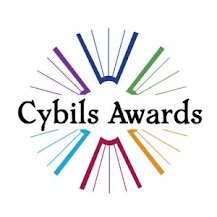I grew up in the Pacific Northwest, with an art history major mom, and as a result I visited a lot of museums and learned about Northwest artists. Dale Chihuly was arguably our most famous local living artist, so I saw a LOT of his glass installations. I have to say that as a younger child they were a bit lost on me – you couldn’t touch or play with them, and they were often mounted far away, or behind plexiglass. As an adult, I’m very proud of Chihuly’s glass, and I recognize it immediately, anywhere I see it around the world – thanks mom! When I saw that there was a picture book biography about Chihuly out from a Seattle publisher, I knew I had to take a look. Author Sharon Mentyka and illustrator Shelley Couvillion's nonfiction picture book A Flash of Color and Light: A Biography of Dale Chihuly is one of the most visually vibrant and beautiful picture books of the year.
The first-ever picture book biography of world-renowned glassmaker Dale Chihuly—with stunning watercolor illustrations that reveal the history of the art—for aspiring artists ages 5-9.
Travel along with Dale Chihuly on his life’s journey full of curiosity, discovery, teamwork, and perseverance as he overcomes challenges to become a glass artist of international acclaim.
Dale Chihuly’s early life presented many challenges, such as tragic losses in his family at a young age and an accident that left him blind in one eye, yet his resilience, hard work, and optimism taught him life-long skills that became inseparable from his body of work—incomparable glass creations that provide rich material for the book’s gorgeous illustrations.
In this picture book biography, Mentyka covers the formation, education, and career of Chihuly throughout several decades, and showcases his artistic evolution. She makes a case for Chihuly’s greatness by discussing his artworks, the school he co-founded, and his worldwide fame. However, as you’d expect in a book for children, there is a substantial focus on Chihuly’s younger years, family life, and his first attempts at art. Mentyka’s biography highlights three elements: an ordinary life broken by tragedy, Dale’s fascination with water, and his dedication to glass. In the final pages, Chihuly’s types of glass artworks are identified, a more in-depth biography and family photo from Dale’s childhood and a glassmaking glossary are included, and finally, there’s a timeline of Chihuly’s life events from 1941-2012. The story itself is basic, but the back matter will give young readers a strong starting point to understand one of America’s most talented craftsmen/artists.
As an adult reading a picture book, I was impressed most by those final pages (after the story concludes), which went into further detail about Chihuly’s life and contribution to art. These pages also prompted me to read more on Chihuly’s own website, and look up photos of his artworks for reference. For children, this book’s art alone will undoubtedly inspire their own curiosity and creativity, but delving into the back matter (perhaps with an adult guide) in depth will prompt questions about art-making and Chihuly – it is that intriguing!
And that art – it is especially stunning and attention-grabbing, almost neon in its vibrancy. It feels as though artist Couvillion (who I didn’t realize was someone I followed on Instagram??) understood the assignment deeply, and dove right into a psychedelic rainbow of color. Her medium of watercolors and pens (that’s a guess on the last one) perfectly washes the sky, sea, and land, along with details of architecture and indoor interiors – but the star of her art are the renditions of glass. It’s there in a true kaleidoscope of brights – all bleeding one into the other in layers just like Chihuly’s glass does. In contrast, Couvillion’s figures are flat and slightly boxy, with textures (Chihuly’s curly hair looks like so many waves, or perhaps pasta!), stylized features (look at the hands!), and skillfull shadow and light work. The art alone is worth pouring over again and again and again. Bravo!
Note: One page mentions that Dale lived in an Israeli kibbutz for a few months and that it was a formative experience in his young adulthood. The kibbutz movement was and is a Zionist project. Dale himself is not Jewish. Given the state of the world, this is an authorial choice that deserves more context and interrogation.
In all, A Flash of Color and Light is a celebration of color, light, glass, and Dale Chihuly’s enormous contribution to the field of glassmaking and art.
Recommended for: young ones ages 4+ and the adults who read to them, those interested in picture books about art and biographies of artists, and anyone who appreciates absolutely gorgeous illustrations.
A Flash of Color and Light: A Biography of Dale Chihuly will be released by Little Bigfoot (Sasquatch Books) on October 15, 2024.
Fine print: I read an advanced digital copy of the text on Edelweiss. I did not receive any compensation for this post.

























